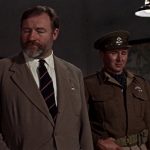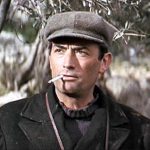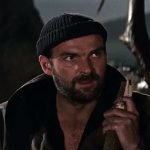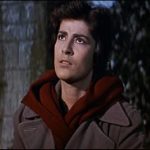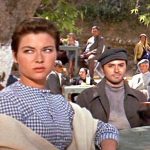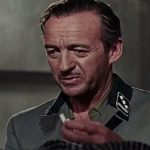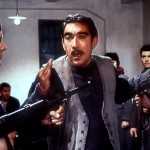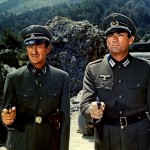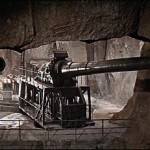
The Guns of Navarone – 1961
Yes, this was a very good movie. The acting was good, the characters were cool, the action sequences were exciting, and the plot was engaging. This was part of a cycle of big-budget WWII films that came out in the late 50s and early 60s. Other films in this little sub-genre were 1957’s Bridge on the River Kwai, 1962’s The Longest Day, and 1963’s The Great Escape.
The basic plot is fairly simple, and just to give proper credit, I lifted this entire paragraph from Wikipedia. In 1943, the Axis Powers plan an assault on the island of Keros where 2,000 British soldiers are marooned. Rescue by the Royal Navy is prevented by two massive radar-directed superguns on the nearby island of Navarone. When aerial bombing efforts fail, Allied Intelligence gathers a team of commandos to infiltrate Navarone and destroy the guns. Led by Major Roy Franklin, played by Anthony Quayle, the team is composed of American Captain Keith Mallory, played by Gregory Peck, a renowned spy and mountaineer, Colonel Andrea Stavrou, played by Anthony Quinn, from the defeated Greek army, Franklin’s best friend Corporal Miller, played by David Niven, an explosives expert and former chemistry teacher, Greco-American Spyros Pappadimos, played by James Darren, a native of Navarone, and “Butcher” Brown, played by Stanley Baker, an engineer and expert knife fighter.
Along the way they add two women to their party. One is Pappadimos’ sister Maria, played by Irene Papas. The other is her friend Anna, played by Gia Scala. The two women are natives of Navarone, freedom fighters who are sent to help the commandos. Anna had once been a school teacher until she was extensively tortured by the Germans. She no longer speaks. They help the men sneak into Navarone.
The intense action was inherent to the plot, but the human drama was written in to the characters. Each man had a story of his own, a history that sometimes got in the way of the mission. But, in thinking about it, there was never any doubt in my mind that the mission would be completed. Of course, the heroes would win. But the question was: Which of them would survive and what would they have to go through to get the job done?
The answer? Dangerous sailing over rough waters, a daring climb up a steep cliff, close combat with German soldiers, a cross-country trek carrying Major Franklin who has broken his leg, capture, escape, and a traitor in their midst. Add to that dissention among the men who disagree with the command decisions made by Captain Mallory after Major Franklin is incapacitated. It seems like the team has everything against them with little hope of succeeding. But that was what made the film so exciting.
I particularly liked Anthony Quayle and Gregory Peck. I thought they both played their parts especially well. Peck actually surprised me. He was the all American man, both on the screen and off. As an actor, he had an image of being honorable, honest, and gentle, a man of integrity and compassion. But in this film, he really played a cold-blooded, hard-nosed killer.
This point is really brought into the spotlight when the traitor is discovered. It was the silent Anna. The men were then faced with a tough decision. They could not continue on with the girl, but to leave her behind would endanger the success of the mission. After some heated arguing, Captain Mallory agreed that she would have to be killed. And he was prepared to do it. He actually raised his gun to murder an unarmed woman, something which was surely not in keeping with Peck’s squeaky clean image. Fortunately, that image did not have to be tarnished. Maria shoots the girl at the last instant, saving Captain Mallory from having to do it himself.
And the final scene is visually stunning. Not only do they disable the superguns, they practically blow up half the Island. Fortunately, they made a point of showing that the town of Navarone had been evacuated of its civilian population. It was a spectacular ending to an exciting and well-made film. The film was nominated for 7 Academy Awards, and won only 1: Best Effects, Special Effects. But as for Best Picture, it lost to West Side Story. It must have been a tough choice, but though I really liked the Guns of Navarone, I think the Academy made the right decision.
